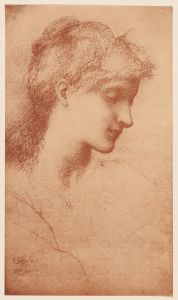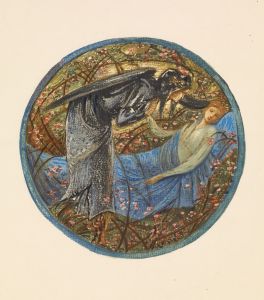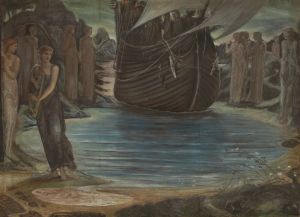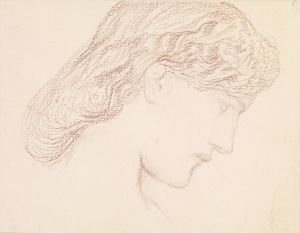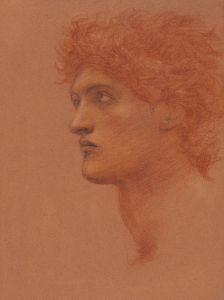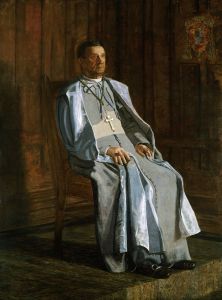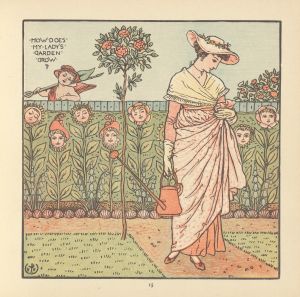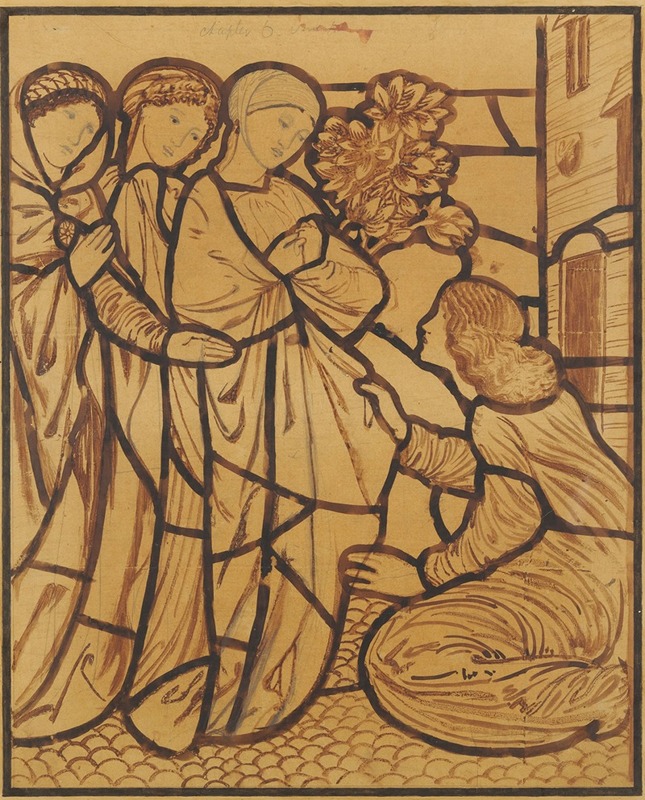
The Song of Solomon – ‘Whither is thy Beloved gone, O thou fairest among Women’
A hand-painted replica of Sir Edward Coley Burne-Jones’s masterpiece The Song of Solomon – ‘Whither is thy Beloved gone, O thou fairest among Women’, meticulously crafted by professional artists to capture the true essence of the original. Each piece is created with museum-quality canvas and rare mineral pigments, carefully painted by experienced artists with delicate brushstrokes and rich, layered colors to perfectly recreate the texture of the original artwork. Unlike machine-printed reproductions, this hand-painted version brings the painting to life, infused with the artist’s emotions and skill in every stroke. Whether for personal collection or home decoration, it instantly elevates the artistic atmosphere of any space.
Sir Edward Coley Burne-Jones, a prominent British artist associated with the Pre-Raphaelite Brotherhood, created the painting "The Song of Solomon – ‘Whither is thy Beloved gone, O thou fairest among Women’" in the late 19th century. Burne-Jones was known for his romantic and mystical style, often drawing inspiration from literature, mythology, and religious texts. This particular work is inspired by the biblical Song of Solomon, a poetic book from the Old Testament that explores themes of love and longing.
The painting captures a moment from the Song of Solomon, specifically from Chapter 6, Verse 1, which reads: "Whither is thy beloved gone, O thou fairest among women? Whither is thy beloved turned aside? That we may seek him with thee." This verse is part of a dialogue between the Shulamite woman and the daughters of Jerusalem, expressing a quest for the beloved. Burne-Jones's interpretation of this text reflects his fascination with themes of beauty, love, and the divine, which are recurrent in his body of work.
Burne-Jones's style is characterized by its intricate detail, use of rich colors, and a dreamlike quality that evokes a sense of otherworldliness. In this painting, he employs these elements to create a serene and contemplative atmosphere. The figures are depicted with elongated forms and ethereal expressions, typical of Burne-Jones's approach to the human figure. The composition likely includes symbolic elements that enhance the narrative of the biblical text, although specific details of the painting's content are not widely documented.
The artist's connection to the Pre-Raphaelite Brotherhood is evident in this work through his emphasis on beauty and emotion, as well as his meticulous attention to detail. The Pre-Raphaelites sought to return to the abundant detail, intense colors, and complex compositions of Quattrocento Italian art, rejecting the academic standards of their time. Burne-Jones, although not an original member of the Brotherhood, became closely associated with its ideals and was a key figure in the later phase of the movement.
"The Song of Solomon – ‘Whither is thy Beloved gone, O thou fairest among Women’" reflects Burne-Jones's broader artistic vision, which often intertwined literature and visual art to explore profound human experiences. His works are celebrated for their ability to transport viewers into a realm of beauty and contemplation, and this painting is no exception. It stands as a testament to Burne-Jones's skill in merging narrative and aesthetics, creating a piece that resonates with the timeless themes of love and spiritual yearning.
While specific details about the painting's current location or exhibition history are not readily available, Burne-Jones's works are held in numerous public and private collections worldwide, including major institutions such as the Tate Britain and the Birmingham Museum and Art Gallery. His legacy continues to influence artists and captivate audiences, ensuring his place as a significant figure in the history of British art.





